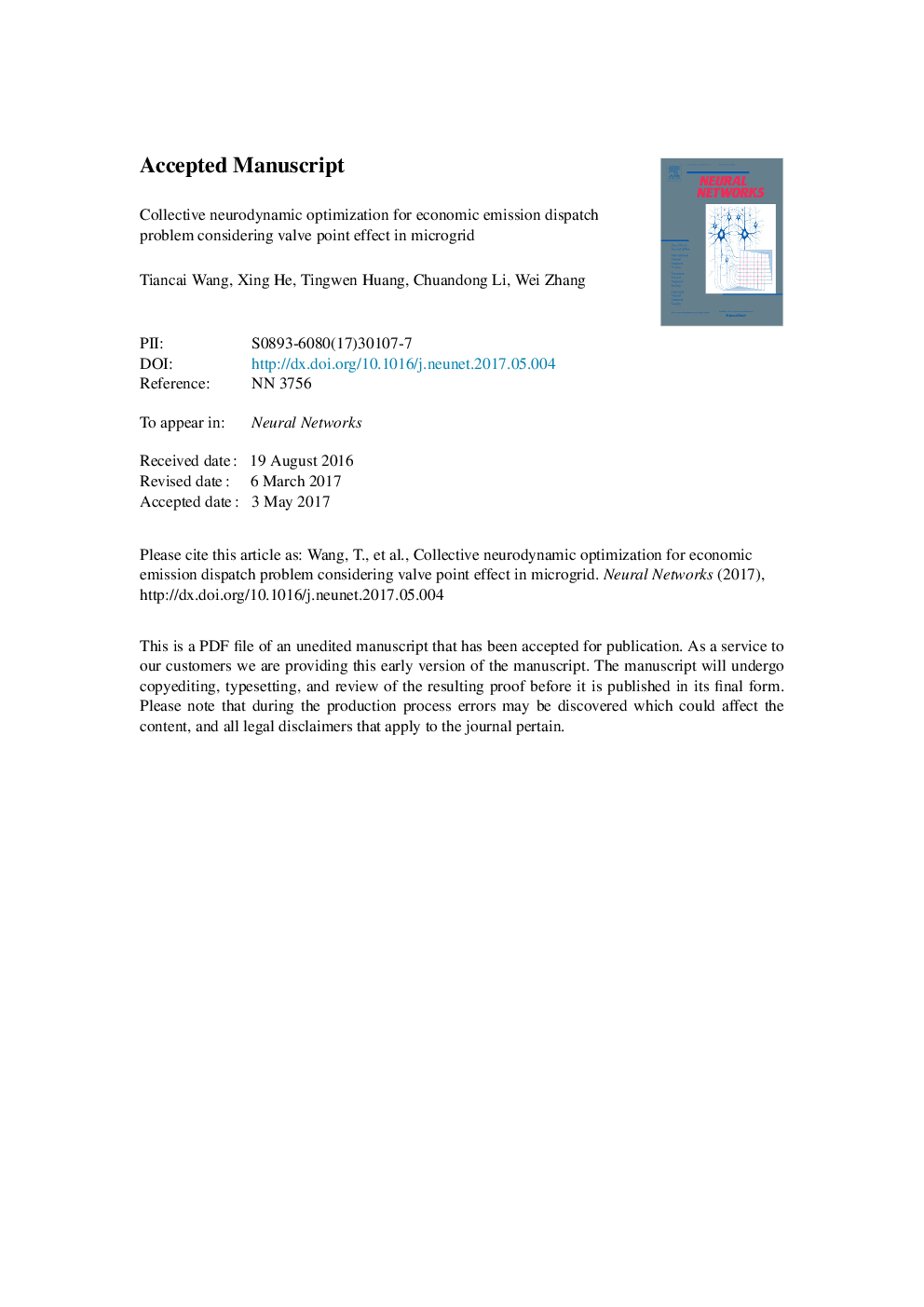| Article ID | Journal | Published Year | Pages | File Type |
|---|---|---|---|---|
| 4946625 | Neural Networks | 2017 | 20 Pages |
Abstract
The economic emission dispatch (EED) problem aims to control generation cost and reduce the impact of waste gas on the environment. It has multiple constraints and nonconvex objectives. To solve it, the collective neurodynamic optimization (CNO) method, which combines heuristic approach and projection neural network (PNN), is attempted to optimize scheduling of an electrical microgrid with ten thermal generators and minimize the plus of generation and emission cost. As the objective function has non-derivative points considering valve point effect (VPE), differential inclusion approach is employed in the PNN model introduced to deal with them. Under certain conditions, the local optimality and convergence of the dynamic model for the optimization problem is analyzed. The capability of the algorithm is verified in a complicated situation, where transmission loss and prohibited operating zones are considered. In addition, the dynamic variation of load power at demand side is considered and the optimal scheduling of generators within 24 h is described.
Related Topics
Physical Sciences and Engineering
Computer Science
Artificial Intelligence
Authors
Tiancai Wang, Xing He, Tingwen Huang, Chuandong Li, Wei Zhang,
